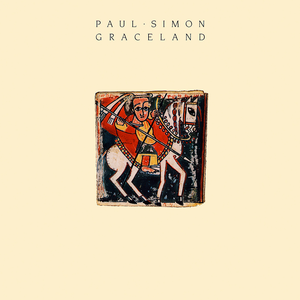Published on Jul 14, 1999
One has to wonder if Paul Simon knew during the recording of
Graceland that he was about to set the world of popular
music on its ear.
Most people had written Simon off as a relic of the ’60s and
’70s; he hadn’t had a real “hit” since the song “Late In The
Evening”, and he had barely survived what some people called career
suicide with the movie
One-Trick Pony. Simon’s discovery of South African melodies
thanks to a compilation album seemed to be the creative spark that
he needed, and in 1986,
Graceland was sent forth – arguably becoming Simon’s best
work of his career.
The album, in effect, served as a revelation to Simon of the
unique power and artistry he has, as well as the sheer joys of the
rhythms of South Africa to the rest of the world. Without songs
like “Diamonds On The Soles Of Her Shoes,” we might never have
heard of Ladysmith Black Mambazo – and that would have been our
loss. Thirteen years after its release, this album has lost none of
its power – even if some of its references are a little dated.
The singles from this album are instantly recognizable, even
today. “The Boy In The Bubble”- with Forere Motloheloa’s frenzied
accordion work opening the track – is still a delightful mixture of
musical cultures that succeeds on many different levels. What seals
the deal for this song – as well as the others on the album – is
the use of South African artists instead of relying on studio
hotshots.
Maybe some of the younger listeners won’t understand the
reference to the “baby with the baboon heart” (Baby Fae, in case
you had forgotten), but the track’s power is still as strong today
as it was over a decade ago. Likewise, “You Can Call Me Al” is
still a fun track to listen to, and has not worn out its welcome in
the marketplace. While never released as a single, both “I Know
What I Know” and “Gumboots” kick things into overdrive.
The peak of the set, of course, is “Diamonds On The Soles Of Her
Shoes”. The interaction between Simon and Ladysmith Black Mambazo –
as well as the incredible guitar work of Chikapa “Ray” Phiri – is
still enough to bring tears to my eyes in just the right setting.
This is not Simon bastardizing the rhythms of South Africa; this is
him embracing them and making them accessible for Westerners.
Further proof is on the track “Homeless,” which features Simon
singing in the native language of Ladysmith Black Mambazo.
Just like Simon brought ska and reggae to people’s attention in
the early 1970s with the song “Mother And Child Reunion,” he brings
not only South African rhythms but also zydeco to listeners on
Graceland. “That Was Your Mother” enlists the help of Good
Rockin’ Dopsie And The Twisters to show some people who otherwise
wouldn’t listen to zydeco on a dare just how festive and lively
this genre of music is.
Simon does happen to create songs that have enough of a modern
flavor to them to make sure that listeners aren’t scared away by
too many new musical concepts. The title track is a happy shuffle
that features the Everly Brothers on backing vocals; Linda
Ronstadt’s contribution to “Under African Skies” is uplifting and
beautiful.
Simply put,
Graceland is perfect. Simon knew exactly how to shape the
music into something of his own creation while not losing any of
the original essence of the tribal rhythms. While you can derive
some pleasure from the singles released off
Graceland, this remains an album that must be experienced as
a whole. No matter how many albums I listen to each month,
Graceland remains one of my all-time favorites.
